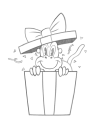After years of critiquing student work, I’ve put together a list of top 5 shading mistakes and how to fix them. I was guilty of #5 for a long time
Newest
Nicola Hayward
4yr
When is your drawing basic course coming out?
Ron Kempke
3yr
Yes, Stan announced this 4 years ago. What gives?



